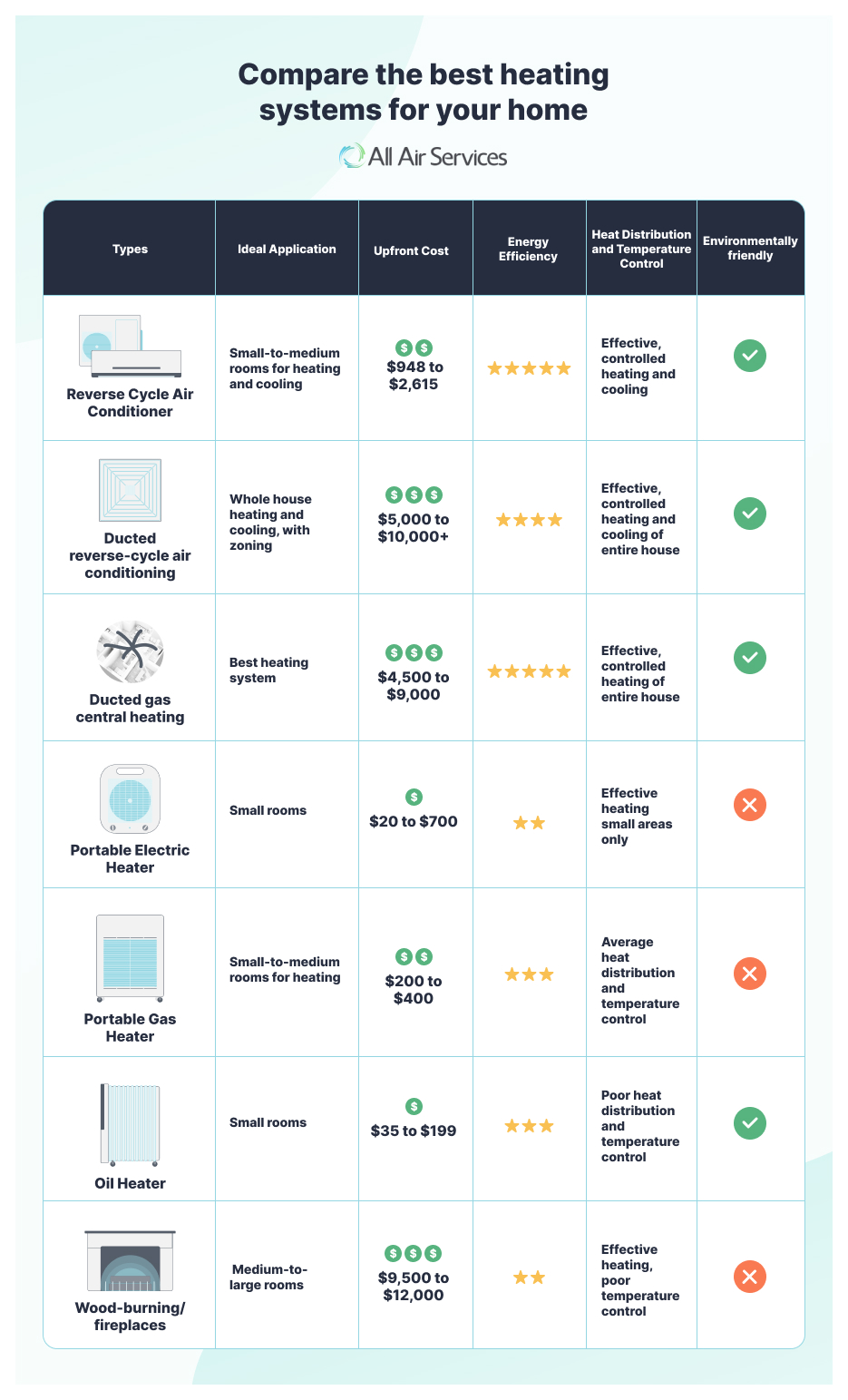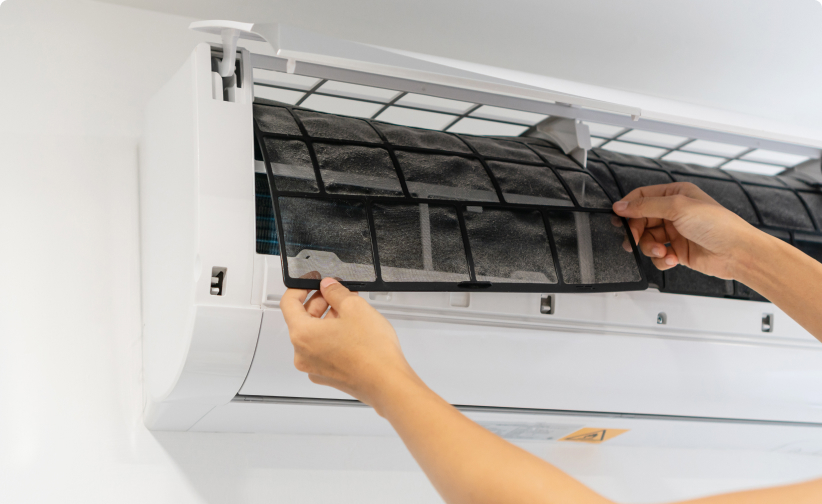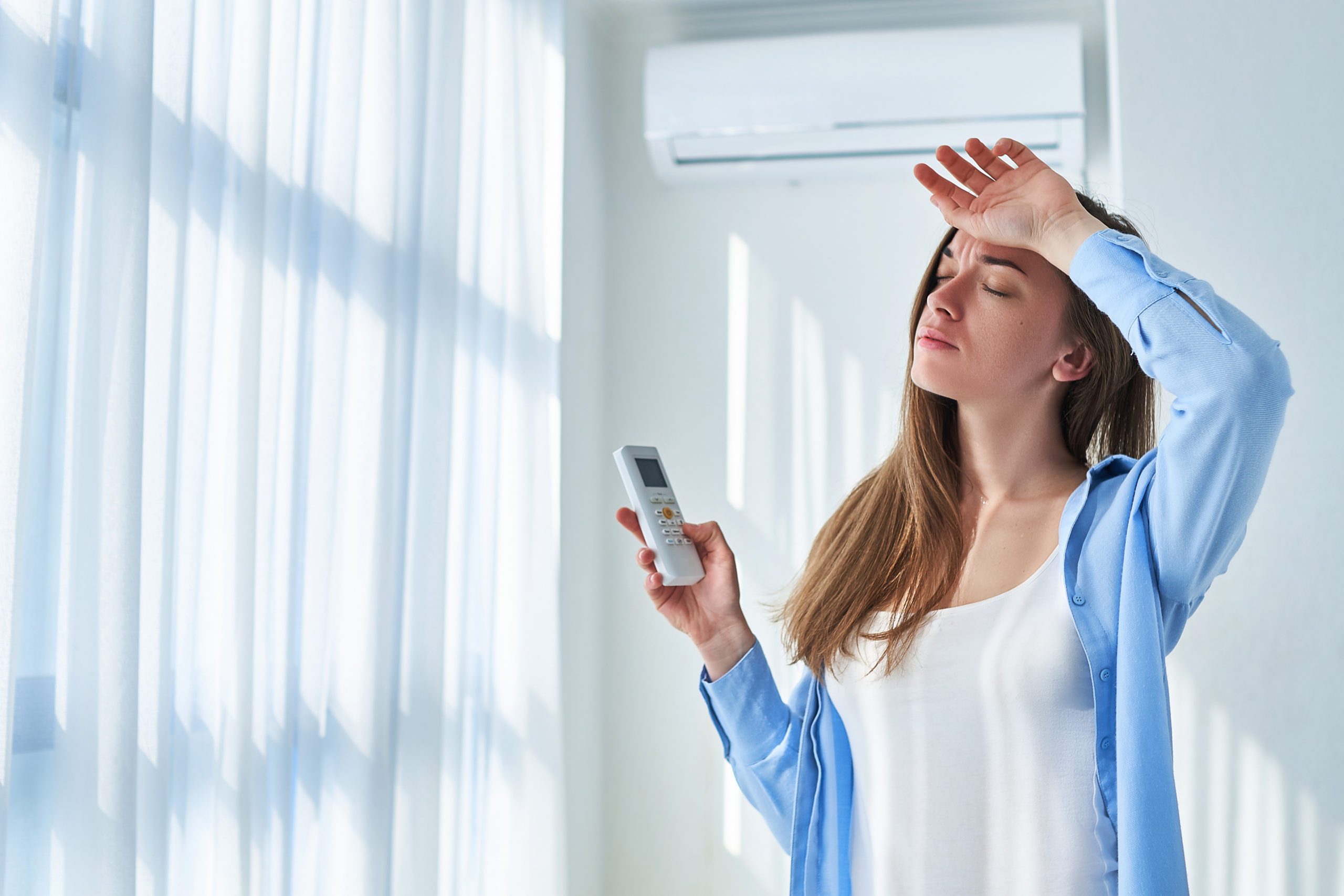Reverse cycle air conditioning Vs Heaters (electric or gas): which is better for you? We compare the most common heating solutions.
Shopping for a heater in winter is like walking into a candy store as a kid. It’s not until winter rolls around, when you realise just how many types of heating options are available.
But what is the best way to heat your home without going broke? There are many factors to consider including room size, energy efficiency, amount of insulation, local climate, among many others.
This buying guide helps you heat your home with the most cost-effective option, but with maximum comfort by comparing the most common heating methods and their costs.
Walsall What is the best way to heat your home?
Choosing the best heating option for your home generally comes down to three main types: electric heaters, gas heaters and reverse cycle air conditioners. However, there wouldn’t be any need for this heating guide if life were that simple.
Each category is filled with more options including ducted systems, oil heaters, fan heaters, natural gas, and many more.
Euclides da Cunha Factors to consider before buying a heater
1. What is your local climate?
The first factor to consider before buying a heater is climate. Climate will play a massive role in the heater capacity you choose and have a direct impact on your energy consumption and energy bills.
For example, a well-insulated room of 20sqm in a moderate climate (like Perth) will probably require a 2000W electric heater or gas heater with 6-8MJ input.
If it’s poorly insulated and has air leakage (accounts for 15-25% of winter heat loss), even a 2400W electric heater would struggle, and would need at least a 10-12MJ gas heater.
2. What area of the home are you heating?
Different size rooms will require different size heaters, unless you’re going for whole house heating options such as ducted heating. Room sizes —
Small (10-20sqm): small capacity reverse cycle systems or electric heaters are effective.
Medium (35sqm): medium capacity reverse cycle systems or gas heaters are effective.
Large (60sqm): ducted heating, large capacity reverse cycle systems are highly efficient, natural gas heaters.
It’s important to note that regardless of space, if there is a lack of insulation, large glass windows, or cold draughts from unsealed doors/windows, you will require a larger heater.
3. Gas, electric or reverse cycle?

(Room sizes: Small: 10-20 sqm, Medium: 35 sqm, Large: 60 sqm)
Gas heaters
Good for heating smaller to medium-sized spaces.
Average cost to run in winter: $196 to $327
Gas heaters are generally cheaper to run compared to electric and are capable of heating medium to large areas quite quickly. Gas heaters tend to cost a little more to purchase up front. Depending on gas type (unless natural gas), they may also produce harmful emissions, such as carbon monoxide. This is why Australian law requires certain indoor gas heaters to have a flue installed to help with ventilation.
- Flued gas heaters remove harmful gases such as carbon monoxide and vapour through a flue or pipe and redirect them outside. However, this may cause a small amount of heat loss and reduce the efficiency. Generally more expensive to purchase and install.
- Portable unflued gas heaters expel their waste products into the room being heated. Australian standards and regulations strictly limit the amount of emissions allowed, but even so you need to keep the room ventilated.
- Ducted gas central heating centralised, whole house gas heating. Less expensive to run, less cumbersome, and more environmentally friendly compared to other forms of heating. However, it is much more expensive up front to install. Unlike portable heaters, centralised heating can use more energy when the whole house is being heated, rather than single room use.
Electric heaters
Good for heating single rooms, one person.
Average cost to run in winter: $127 to $144
Electric heaters are generally portable and small in size, making them very functional and convenient to use in different spaces, however, most suited to small size rooms. No installation costs, is plug-in-and-go and is easily stored. Does not work well in large spaces.
- Fan heaters (also known as ceramic heaters) are smaller in size and more portable than most electric heaters, and are capable of heating the air in a small room rapidly and evenly. Can be quite noisy at max power and will consume more energy in larger rooms, reducing efficiency. Expensive to run for a long period of time.
- Panel and convector heaters take in cold air and warm it over an electric heating element before releasing the warm air. Some heaters come with a fan to enhance the rate and distribution at which the room is heated. Expensive upfront costs, cheaper to run compared to other electric heaters.
- Radiant bar heaters are personal heaters that use radiant heating from a red-hot heating element where the kids take turns to sit in front of. Relatively cheap to purchase and run, but does not heat the air in a room very well. Exposed heat elements can be a fire and safety hazard.
- Oil-filled column heaters use electricity to heat oil that’s sealed inside the columns. As the oil heats up, it is transferred to the column and into the surrounding air. Good for heating small rooms or where they’ll be operated for long periods of time, such as overnight in a bedroom. Not very good at heating large rooms, poor heat distribution.
Reverse cycle air conditioners
Good for any size room, with various model sizes suited for small, medium and large areas.
Average cost to run in winter: $57 to $121
A reverse cycle air conditioner is an air con unit that ensures you stay warm in winter and cool in summer. They are very effective at heating both individual rooms and large spaces such as open-plan living areas.
When it comes to efficient heating, they are the most economical heating option — for every unit of electricity consumed there is an output of three times more units of heat due to heat pump technology.
That said, reverse cycle air conditioners are expensive upfront when compared to buying a portable electric or gas heater. They need to be wall mounted, with split systems requiring an exterior unit to be installed.
Tips on how to make heating your home cheaper
- For reverse cycle air conditioners, set the right temperature — try 20 – 21 degrees instead of 24. Each degree less will save you around 10% on your energy use.
- Seal gaps around windows, doors, floorboards, and air vents. Cold draughts (air leakages) account for 15-25% loss of winter heat.
- Use draught stoppers like a door snake
- Avoid heating unoccupied rooms
- Insulate your home. Insulation can reduce up to 35% heat loss through the ceiling and save you hundreds of dollars on energy bills every year.
- Clean your air conditioning filters and get an annual service to make sure it runs effectively and efficiently
Choose the right heating and cooling option for your home
Different heating and cooling systems will work for you, depending on your needs. You must assess your space and your year-round needs before deciding on which heating and air conditioning installation will provide you with the most cost-effective option.
All Air Services can help you assess your needs and provide you with various air conditioning options for residential or business properties. Contact us today if you need assistance with determining what the ideal system is or receive a quote for installing one of our units.




